15 Odd And Interesting Facts about Monkeys
Because of their mischievous nature, monkeys are one of the most popular
animals in the world. In many ways, the primates are among the most human-like
of creatures, often displaying a behavior that is strikingly similar to that of
man. Besides their human-like qualities, monkeys also have some unique traits of
their own.
Illustration of Primates by 19th Century Naturalist G.H.
Schubert:
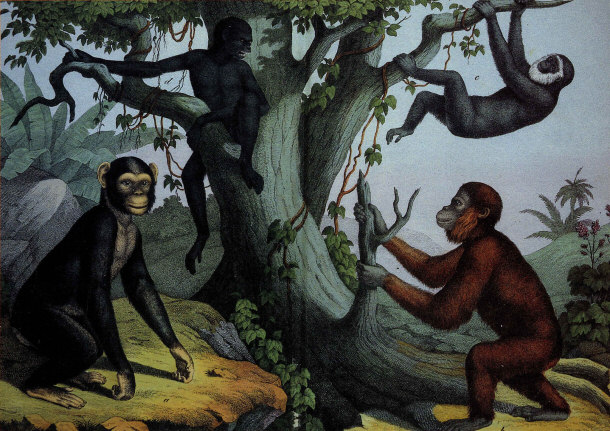
15) Monkeys Are Worshipped in a Number of Religions
Hanuman is a human-like monkey god in the Hindu religion, and is a highly
regarded deity. The god is believed to inspire strength and courage as well as
bestow a long life to those who embrace him spiritually.
In Ancient Peru, worshippers once regarded monkeys with great respect and
often included them in their artwork. What's more, the Tzeltal people of Mexico
believed the animals to be incarnations of their departed ancestors.
Tzeltal Dancers Performing at the Municipal Palace in San
Cristobal, Mexico:

By AlejandroLinaresGarcia
via Wikimedia Commons
The monkey is considered spiritually significant in Buddhism too, though in a
much more complicated way. That’s because the primate is considered to be an
early personification of Buddha. As a result, some followers of the religion
regard monkeys with high esteem.
Buddha While Living in the Deep Forest - Monkey Gives the
Buddha Some Honey to Sustain His Life and Many Other Animals in Turn Provide for
the Buddha:

By myself
via Wikimedia Commons
However, some Buddhists do not feel the same way as their fellow followers
and see the monkey as exhibiting traits that do not go along with the Buddhist
philosophy of acceptance and peace. For example, in Chinese Buddhism, the
metaphor, “mind monkey” or “monkey mind,” denotes someone who has a restless or
disordered mind.
14) Two Islands Are Considered Home Solely to Monkeys
Two islands in the world are dedicated to monkeys. One of the islands, known
as Monkey Island, is located in Puerto Rico and was established in 1938.
Scientists breed monkeys there for research purposes. Researchers also study
monkeys in the wild at the habitat. Currently, over 800 monkeys reside on the
island.
One Female and One Young Rhesus Macaque, the Variety that Dominates Local Population:
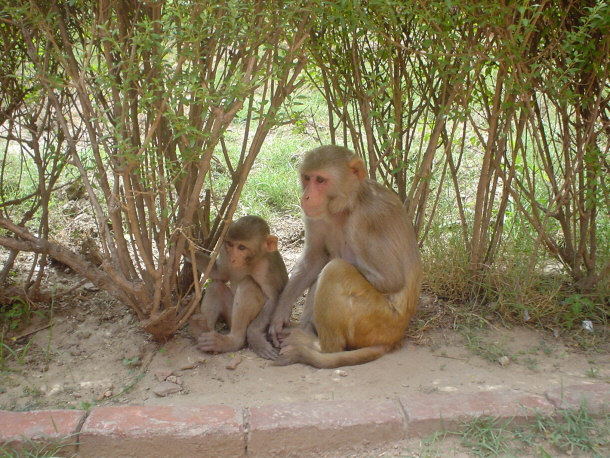
By Mieciu K2
via Wikimedia Commons
The second island, called Morgan Island, is located off of South Carolina.
Established in 1979 for the same reasons as Monkey Island, the isle is home to
4,000 monkeys – five times more than what live in the Puerto Rican sanctuary.
Sign and Some of the Local Wildlife on Morgan Island, SC:

13) Monkeys Can Recognize Themselves in Mirrors
Few animals possess the ability to recognize themselves in a mirror. Upon
seeing their reflection, most mammals merely assume that it’s just another
animal. However, monkeys are one of the few animals that can recognize their own
image.
White-Faced Capuchin Monkey from Costa Rica - Only Primate
to Have Some Difficulty With Recognizing Their Reflection:
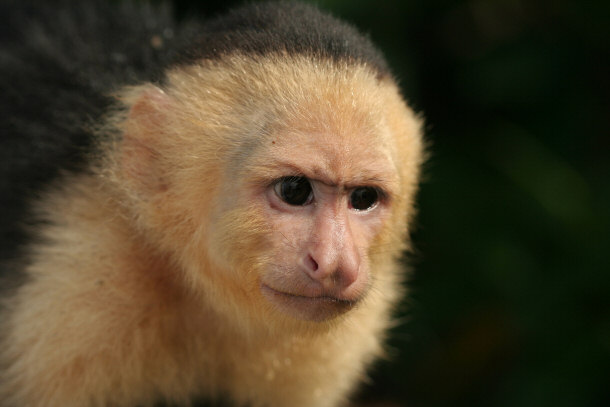
The only exception, in this case, is the capuchin monkey, which does not
make the connection at first glance. Besides the monkey, only orcas, apes,
elephants and dolphins can identify their reflection.
Capuchin Monkey:
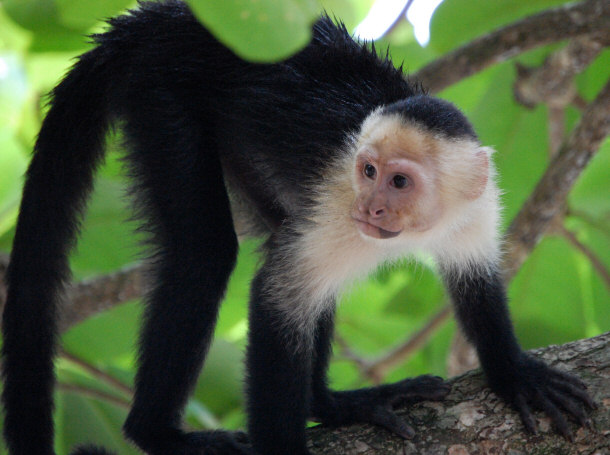
By Steven G. Johnson
via Wikimedia Commons
12) Monkeys Peel Bananas Upside Down
Like humans, monkeys will peel their bananas and not consume the skin.
However, the primates peel the banana from the bottom up instead of from the top
like a human.
Peeling the Proper Way - Starting at the Bottom and Working
Towards the Stem:

Although peeling the fruit from the top down is assumed to be the best
approach, people seem to have more trouble with this method if the stem rips
off. That’s when the monkey’s technique works out better for him.
Sometime, why not give it a shot at home and see which way is better. The
same way you were taught years ago to peel and eat a banana, or another way that
has been forged over generations of adaptation and genetic optimization.
11) Monkey’s Don’t Like Human Contact
Despite the fact that many humans enjoy patting and hugging monkeys, the vast
majority of monkeys actually hate contact, especially from their human friends.

Even monkeys that have been domesticated don’t like this kind of interaction.
While domesticated monkeys will tolerate being touched by humans, they prefer to
congregate and interact with their own species.
It Might Appear that These Monkeys Are Completely Safe to
Socialize With - Never Do Something Like This Without Extreme Caution:
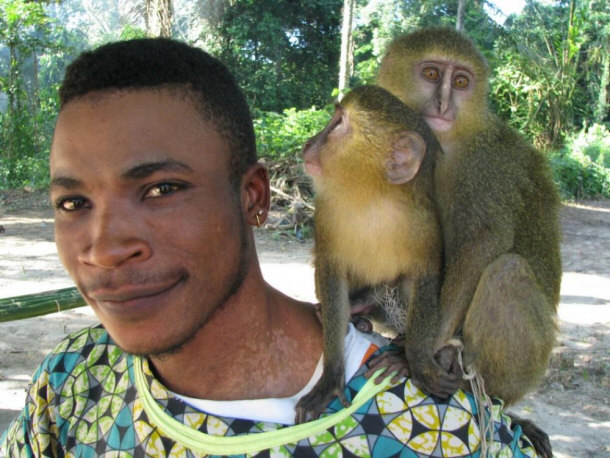
10) The Howler Monkey Is the Loudest and Laziest of the Monkey Species
Of the various monkey breeds, the Howler monkey is by far the loudest. In
fact, the primate’s howl is so ear-numbing that the call can be heard up to
three miles away!
Two Howler Monkeys Vocalizing:
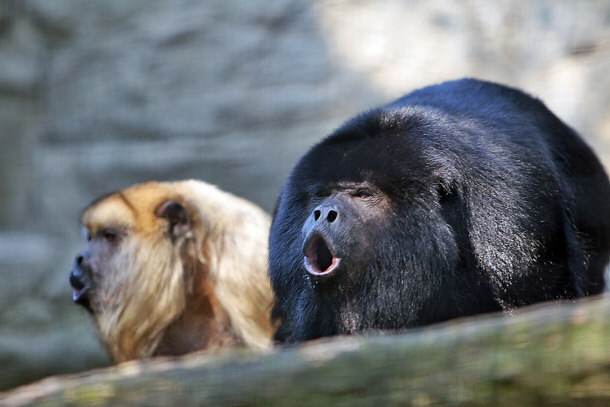
By Steve
via Wikimedia Commons
Despite its raucous way of expressing itself though, the
Howler, fortunately, spends most of its time (around 80%) sleeping or at rest.
Brown Howler in Santa Maria de Jetiba, Brazil:
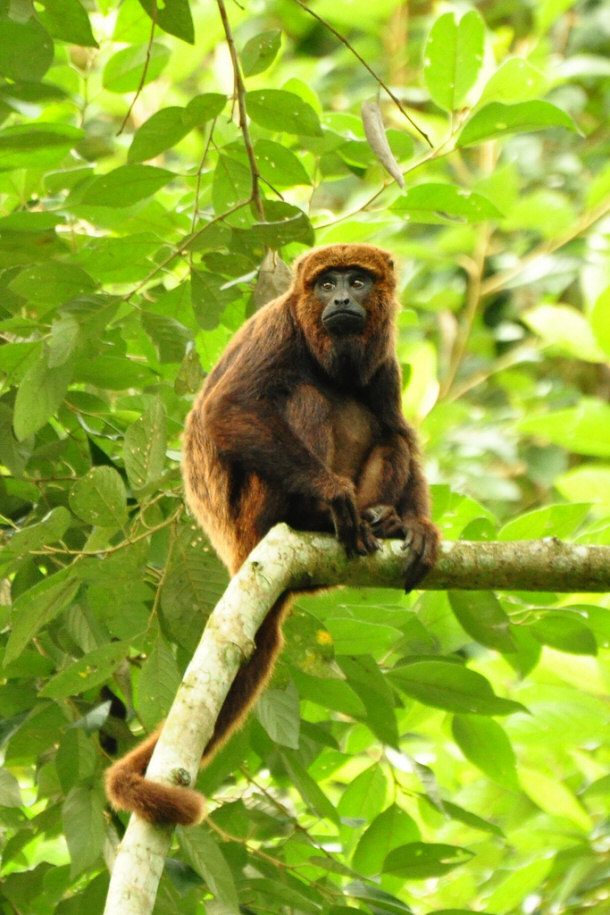
By Paulo B. Chaves
via Wikimedia Commons
9) Monkeys Understand the Concept of Money
 In 2005, researchers wanted to prove that humankind wasn’t the only species
that understands the concept of money. Therefore, scientists conducted a study
involving seven capuchin monkeys. The basic idea of the experiment was to give
the animals money and see what they would do with it. In 2005, researchers wanted to prove that humankind wasn’t the only species
that understands the concept of money. Therefore, scientists conducted a study
involving seven capuchin monkeys. The basic idea of the experiment was to give
the animals money and see what they would do with it.
Because capuchin monkeys have relatively small brains, their typical concerns
have to do with food or sex. Therefore, food was provided as an incentive to
teach the primates the value of cash. Although it took several months for the
monkeys to learn this principle, the primates began budgeting their money when
they found they could exchange it for food.
The monkeys, who could choose from applies, grapes or Jell-O, liked the most
expensive treat, or the Jell-O best. As a result, they bought more of the
product when the prices were lowered and less of the dessert when the prices
increased.
8) Titi Monkeys Are Monogamous
Among the many species of monkeys in the world, only the Titi monkey of South
America is known to be monogamous. The monkey, which mates for life, becomes
highly distressed if it is separated from its partner for any length of time.
Titi Monkeys Snuggling Up:
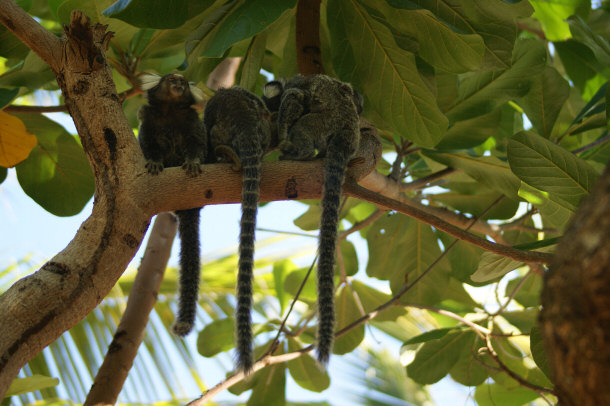
The affectionate animals show their love by grooming one another, nuzzling,
holding hands, smacking their lips, cuddling, and intertwining tails.
Titi Monkey:
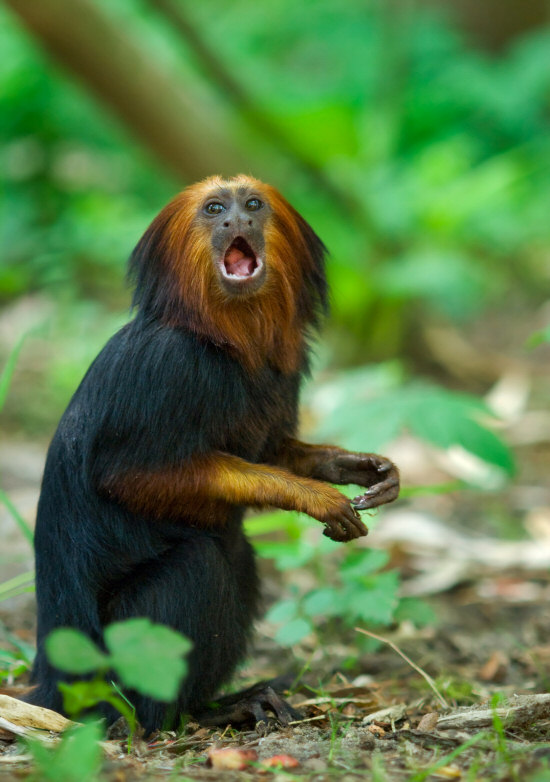
7) Capuchin Monkeys Can Use Tools And Sound Warnings
The Capuchin monkey is remarkably skilled when it comes to using tools.
Often, the monkey will use rocks to break shells of nuts or will manipulate
sticks to reach into crevices to obtain food. The monkey, which protects its
hands by creating gloves made out of leaves, can ably defend itself as well
using branches from trees. The agile monkey also removes the hair from
caterpillars by scraping the larvae’s body against trunks of trees.
White-Faced Capuchin Monkey:
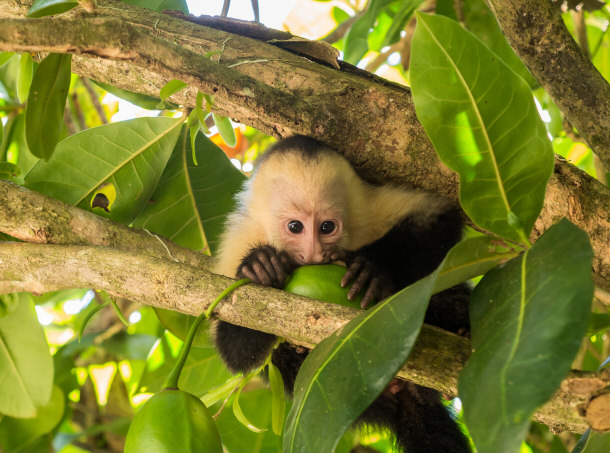
In addition, the capuchin uses limbs along with rocks to sound a warning to
the other monkeys about an approaching danger. The monkey uses one of a number
of vocalizations to sound out an alarm as well.
6) There Are Two Specific Groups of Monkeys
Officially, there are two groups of monkeys – Old World Monkeys and New World
Monkeys. Monkeys from South and Central America, with flat noses, make up the
New World group while monkeys from Africa, with thinner noses, comprise the Old
World group.
New World Monkeys = Orange and Old World Monkeys = Red:

By Maphobbyist
via Wikimedia Commons
A number of differences are displayed between the two groups. For example,
Old World monkeys possess 32 teeth while the New World variety have 36. Old
World monkeys have large cheek pouches as well, where they store food that they
save for later consumption. Also, a large number of New World Monkeys don’t have
thumbs, although squirrel monkeys and capuchins have pseudo-opposable thumbs,
which help them climb and eat.
Dominant Male Proboscis Monkey - Old World Monkey:

By Bjorn Christian Torrissen
via Wikimedia Commons
Approximately 80 species of New World monkeys are known to live in the Amazon
basin at this time and 90 species of Old World monkeys are found in their
natural habitats in Africa, Asia, and the Middle East.
White-handed Gibbon - New World Monkey:
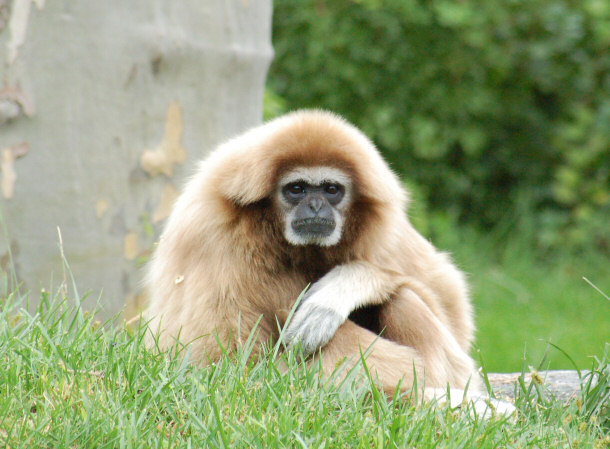
By Ram-Man
via Wikimedia Commons
5) Diseased Monkeys Are a Hazard in Florida
While there are numerous tourist sites throughout the world where monkeys
roam freely, visitors to these regions should not get too close to the animals.
Monkeys, especially, populate the countries of Thailand and India, where they
carry such bacterial viruses as hepatitis, tuberculosis (TB) and simian herpes
B.
Transmission Electron Micrograph of Herpes Simplex Virus:

In fact, the health hazards are so pronounced that the state of Florida
issued an alert in 2013. At that time, they cautioned people about the strong
possibility of contracting herpes B from the rhesus monkeys that reside in the
state.
Two Young Indian Rhesus Macaque Monkeys Playing:
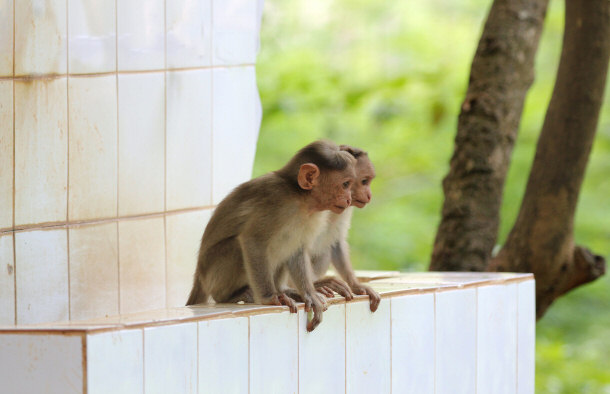
The monkeys became a part of Florida’s animal population in 1930s. That’s
when a tour operator by the name of Colonel Tooey introduced the rhesus species
to his animal park. Unfortunately, some of the animals got loose and fled onto
the Florida landscape. Now, the monkeys cause a legitimate health concern for
people living in or visiting the Sunshine State.
4) Monkeys Display a Moral Code
Researchers have observed a number of instances when monkeys demonstrate a
strong sense of morality and sensitivity. In one experiment involving rhesus
monkeys, researchers tested the animals by offering them food in return for
pulling a chain. However, there was one contingency – when the chain was pulled,
it would shock another monkey.
Often the Darkest Sides of Science Involve Drug Studies or
Other Highly Involved Medical or Wartime Testing Using Rhesus Monkeys:

Rather than hurt its friend, each primate that
was tested chose to go without the food.
3) Fluorescent Monkeys May Cure Diseases
In 2009, scientists genetically altered five marmoset monkeys. Using a
fluorescent protein, the researchers modified the animals so that they glowed
bright green under ultraviolet light. Unlike earlier monkeys that were
genetically modified, these monkeys were able to pass their unique ability on to
their offspring. This suggested that the alteration was deeply embedded in the
animals’ DNA.
Glowing or Fluorescent Monkeys Spark a Massive Genetic
Engineering Debate:
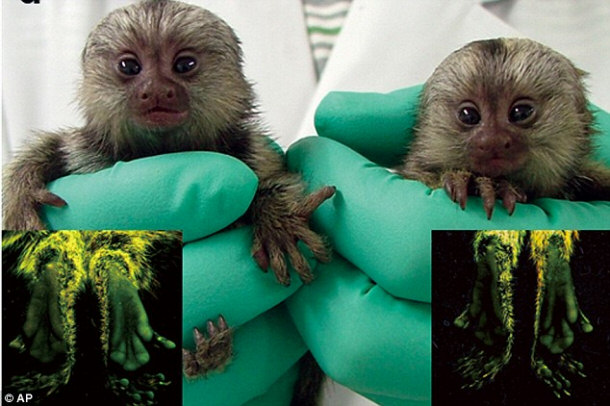
The breakthrough was significant as it showed that genetic modification only
had to be done once. More importantly though, the success of the experiment led
to improved research methods for assessing degenerative, neurological diseases
which, currently, are considered incurable.
Previously, scientists tried adding a gene from subjects suffering from
Huntington's disease into other genetically modified monkeys. However, they
failed in their attempt to add the chromosome to the animals’ DNA. As a result,
the gene was not passed down to the animals’ offspring. Because of the success
of using the fluorescent protein though, scientists discovered individual
modifications were no longer necessary.
In turn, a new animal model has been established in which to study disease.
Therefore, researchers can now use fluorescent protein to study and find cures
for a variety of illnesses.
2) The Three Wise Monkeys Have Names – However, There Are Actually Four of
Them
The "three wise monkeys," otherwise known as the "three mystic apes," are a
visual embodiment of the principle that people should - "See no evil, Hear no
evil and Speak no evil.” Unbeknownst to most people though is the fact that the
three icons actually have names.
Three Wise Monkeys Carved on a Stable at Toshogu Shrine,
Nikko, Japan:
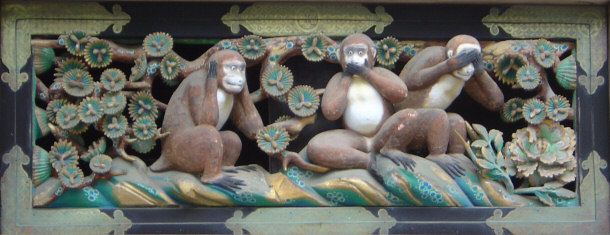
By David Monniaux
via Wikimedia Commons
The monkey covering his eyes (“See no evil”) is named Mizaru while the
primate covering his ears (“Hear no evil”) is called Kikazaru. The primate
shielding his mouth (“Speak no evil”) is known as Iwazaru. In English, the
monkeys' names are typically misrepresented as being “Mizaru,” “Mikazaru,” and “Mazaru.”
The misrepresentation stems from confusion over the original Japanese
translation.
Moreover, Westerners, over time, have misconstrued the general idea of the
“See no evil, hear no evil, speak no evil” message. The original meaning is
meant to encourage people to be of sound mind, speech and action. However,
Westerners have come to view the message as another way of saying to look the
other way to impropriety.
From Left: Iwazaru, Kikazaru, Mizaru, and Shizaru:
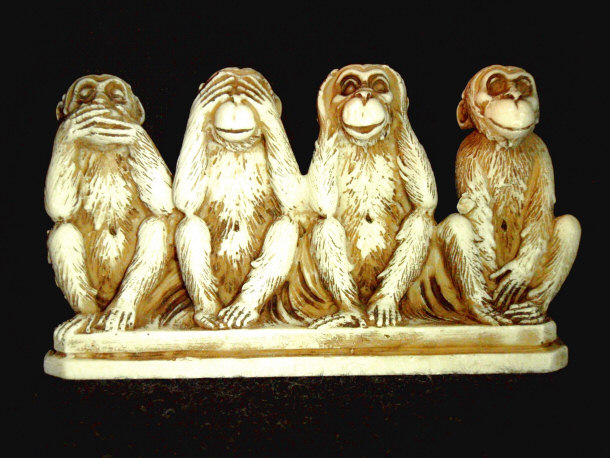
By Bildforyou7
via Wikimedia Commons
One other monkey is sometimes added to the three well-known primates as well.
Shizaru, who is usually pictured with his arms crossed, represents the principal
of “Do no evil,” among the symbolic, well-known primates.
1) Some Monkeys Are Metallica Fans
In 2009, it was discovered that monkeys are fans of heavy metal music,
specifically Metallica. A study found that the music actually had a calming
effect on the animals. Researchers played a variety of musical styles to some
Emperor tamarins, but the monkeys only seemed to like the heavy metal sounds
of the Metallica band.
Emperor Tamarin - A New World Monkey:
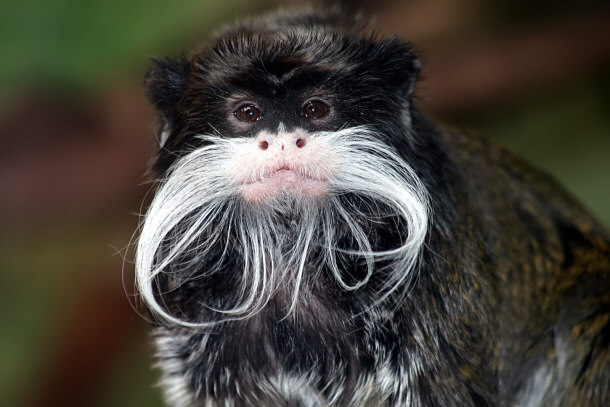
By Brocken Inaglory
via Wikimedia Commons
Other music that was played and tested included classical arrangements by
Bach and songs by Miles Davis. The music of another heavy metal group, Led
Zeppelin, was also tested. However, the monkeys had no response to the classic
tunes of the well-known band.
For the study, psychology professor Charles Snowdon teamed up with cellist
David Teie to perform some of the tunes. Because monkeys use pitch and tone as
well as other auditory cues to express emotion, music can stir certain feelings
and behaviors in the animals. Music contains a number of elements that cause
this effect, including the tones of the vocals, the pitch of the tunes, and the
rhythm and speed of the notes being played.
The monkeys interpret the rise and fall of tones differently than humans do,
which explains why the primates felt calm when listening to Metallica.
Conclusion
Monkeys are indeed fascinating creatures for a variety of reasons. Not only
do they display interesting traits individually, the human-like characteristics
they exhibit are as uncanny as they are well worth noting.
Nature
Top Lists:
15 Fascinating Facts about the Amazon Rainforest
15 Remarkable Facts About Bacteria
15 Remarkable Facts About Jellyfish
15 Little Known Facts About Elephants
15 Fascinating Facts about Earthquakes
15 Odd And Interesting Facts about Monkeys
Top 15 Myths about Snakes
Top 15 Myths about Horses
Top 15 Creepy Deep Sea Creatures
15 Unexpected Animals That Can Kill You Quickly
Top 15 Spider Myths
15 Beautiful Animals that are Now Extinct
Top 15 Most Amazing Snakes Around the World
15 Fascinating Facts about Snow
Top 15 of the World's Rarest Flowers
10 Most Emotional Animals
15 of the Most Venomous Creatures to Roam the Earth
15 Unusual Animal Defense Mechanisms
15 Unusual and Less Known Uses of Rocks
15 Unique Forest Creatures Less Known To Man
15 Interesting Facts About Time
15 Unknown Parasites You Never Knew Existed
15 Weird Trees Around The World
15 Wild Animals Deadly to Humans
15 Exotic Insects That Are Harmful & Deadly
15 Ridiculous Uses for Gold
Informational:
Preparing for a Disaster
Proof That We Are What We Are!
What is the Meaning of Life?
The Trend and Challenges Facing the Urban World
Creation Narratives and the Evolution Creationist Debate |